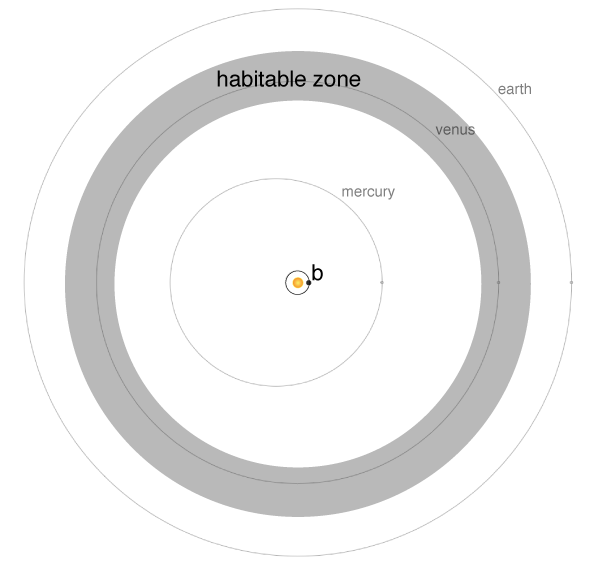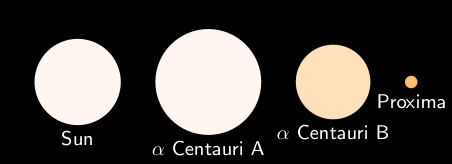The Astronomy Thread
Moderator: Outsider Moderators
The Astronomy Thread
Simulation describing the observed effects of a stellar remnant being ripped apart by a supermassive black hole.
Black Hole Caught Red-Handed in a Stellar Homicide
Black Hole Caught Red-Handed in a Stellar Homicide
Re: The Astronomy Thread
You can hear the scream.
Re: The Astronomy Thread
This is just tearing me apart..
-
Fotiadis_110
- Posts: 141
- Joined: Tue Jul 26, 2011 11:15 pm
Re: The Astronomy Thread
such a horrible choice of photo :p
We don't have a good enough telescope to see to THAT kind of resolution yet, although astronomers are pretty good at making educated guesses.
I'm just waiting for the projected 40 lens uberscope they want to put in the L point on the far side of the earth (to help shade from the sun), it should be able to resolve individual stars in distant galaxies <_<, although actually from what i hear getting them all into alignment will pose a difficulty, and thus give us really good shots of individual stars, but struggle with the whole rapid mapping of the galaxy with such high resolution.
with THEM we should be able to witness a realtime video of said stellar event.
We don't have a good enough telescope to see to THAT kind of resolution yet, although astronomers are pretty good at making educated guesses.
I'm just waiting for the projected 40 lens uberscope they want to put in the L point on the far side of the earth (to help shade from the sun), it should be able to resolve individual stars in distant galaxies <_<, although actually from what i hear getting them all into alignment will pose a difficulty, and thus give us really good shots of individual stars, but struggle with the whole rapid mapping of the galaxy with such high resolution.
with THEM we should be able to witness a realtime video of said stellar event.
Re: The Astronomy Thread
I don't think any of the Lagrangian points would provide much shade from the Sun. At best the Earth-Moon L2 would provide a brief period of shade while the moon is near full. The best(?) use of the Earth-Moon L2 would be to block radio transmissions from Earth.Fotiadis_110 wrote:I'm just waiting for the projected 40 lens uberscope they want to put in the L point on the far side of the earth (to help shade from the sun),
That black hole video is fun, though!
Re: The Astronomy Thread
In the Sun/Earth L2, Earth provides shade; if I recall correctly Herschel and other observatories are already in orbit around that point.
Our Intrepid Crew - Space Opera Webcomic
Re: The Astronomy Thread
I was gonna object against Riesstiu's last post, but apparently the umbra (full shadow) of the earth supposedly does reach almost exactly to (if not a bit beyond) the Sun-Eearth L2 
Re: The Astronomy Thread
You're correct, Riess, and if Celestia is to be trusted, Earth would block most of the Sun's light at 1.5M km distance, … except for the fact that Herschel is in a Lissajous orbit around Sun/Earth L2 with an orbital radius of about 800'000 km which is about ½ of that radius, and would keep it out of Earth's shadow most of the time.Riess wrote:In the Sun/Earth L2, Earth provides shade; if I recall correctly Herschel and other observatories are already in orbit around that point.
Re: The Astronomy Thread
As long as the mirror isn't pointed within a certain angle to the sun, that doesn't matter. There's no light scattering in space. Besides, it has a "hood" to provide shade to the mirror if necessary.Timefly wrote:You're correct, Riess, and if Celestia is to be trusted, Earth would block most of the Sun's light at 1.5M km distance, … except for the fact that Herschel is in a Lissajous orbit around Sun/Earth L2 with an orbital radius of about 800'000 km which is about ½ of that radius, and would keep it out of Earth's shadow most of the time.Riess wrote:In the Sun/Earth L2, Earth provides shade; if I recall correctly Herschel and other observatories are already in orbit around that point.

Re: The Astronomy Thread
fascinating, isn't there meant to be a super massive black hole at the centre f the galaxy?
Re: The Astronomy Thread
I think it's a tad more than just "meant to be there" by now 
It seems it'll be a while until ours gets to rip something apart tho, fortunately for us I would think.
It seems it'll be a while until ours gets to rip something apart tho, fortunately for us I would think.
Re: The Astronomy Thread
A black hole eating a star. Astronomy turns astro-nom-nom-nom-y.
Re: The Astronomy Thread
If your doing infrared work you can have solar heating induced noise regardless of the direction that the telescope is pointing.GeoModder wrote:As long as the mirror isn't pointed within a certain angle to the sun, that doesn't matter. There's no light scattering in space. Besides, it has a "hood" to provide shade to the mirror if necessary.Timefly wrote:You're correct, Riess, and if Celestia is to be trusted, Earth would block most of the Sun's light at 1.5M km distance, … except for the fact that Herschel is in a Lissajous orbit around Sun/Earth L2 with an orbital radius of about 800'000 km which is about ½ of that radius, and would keep it out of Earth's shadow most of the time.Riess wrote:In the Sun/Earth L2, Earth provides shade; if I recall correctly Herschel and other observatories are already in orbit around that point.
Last time I read about a large interferometer telescope they wanted to put in orbit out beyond Jupiter's orbit to cut down on the noise generated by the solar irradiation. It was also supposed to be able to resolve continent sized objects at 10 light years.
--Aygar
Re: The Astronomy Thread
Yess, an astronomy thread!
I was on Gornergrat Observatory two weeks ago, as a culmination of my holidays between two projects (before i was sailing/"taxiing" and racing), and it was the first time i was really riding my astrography gear to the max. Results are quite unspectacular, but i learned a lot.
Maybe i´m going in July again (although Switzerland and especially Zermatt is horribly expensive), with better filters and stuff, and then i´m going trying the big ´uns,
I was on Gornergrat Observatory two weeks ago, as a culmination of my holidays between two projects (before i was sailing/"taxiing" and racing), and it was the first time i was really riding my astrography gear to the max. Results are quite unspectacular, but i learned a lot.
Maybe i´m going in July again (although Switzerland and especially Zermatt is horribly expensive), with better filters and stuff, and then i´m going trying the big ´uns,
sapere aude.
Re: The Astronomy Thread
-
Wintermute
- Posts: 77
- Joined: Wed Mar 09, 2011 12:09 am
Re: The Astronomy Thread
Gives you a really great idea of the scale of the solar system and just how big the sun really is when you see Venus so small next to it like that, even though it's much closer to us than the sun.
Re: The Astronomy Thread
ah, we missed that here in England, nice that it coincided with queens jubilee 
Re: The Astronomy Thread
Wintermute wrote:Gives you a really great idea of the scale of the solar system and just how big the sun really is when you see Venus so small next to it like that, even though it's much closer to us than the sun.
Remind me of that "scale of the universe" flash video
http://scaleofuniverse.com/
Alpha Centauri B b
The European Southern Observatory is reporting a detected planet (via radial velocity measurements) in very close orbit around Alpha Centauri B. The planet is only 1.1 Earth masses -- the smallest exoplanet yet detected -- but extremely close to the star (~6 million km radious, orbital period 3.236 days). Alpha Centauri B is slightly smaller and fainter than Sol, so the habitable zone would be right around Venus distance.

I'm not sure exactly why the planet is designated "b" rather than "a", but those astronomers are a quirky lot.
Alpha Centauri is, of course, a binary system of two sunlike stars (A and B, spectral class G2V and K1V, respectively) 4.3 light years from Earth. It is the proposed location of many and varied inhabited planets throughout science fiction. Outsider proposes two: a Mars-sized planet in a roughly Mars-distance orbit around the A star, and a Venus-sized planet in an elongated orbit around the B star.

http://www.eso.org/public/news/eso1241/
http://oklo.org/2012/10/16/alpha-centauri-b-b/
http://en.wikipedia.org/wiki/Alpha_Centauri

I'm not sure exactly why the planet is designated "b" rather than "a", but those astronomers are a quirky lot.
Alpha Centauri is, of course, a binary system of two sunlike stars (A and B, spectral class G2V and K1V, respectively) 4.3 light years from Earth. It is the proposed location of many and varied inhabited planets throughout science fiction. Outsider proposes two: a Mars-sized planet in a roughly Mars-distance orbit around the A star, and a Venus-sized planet in an elongated orbit around the B star.

http://www.eso.org/public/news/eso1241/
http://oklo.org/2012/10/16/alpha-centauri-b-b/
http://en.wikipedia.org/wiki/Alpha_Centauri



